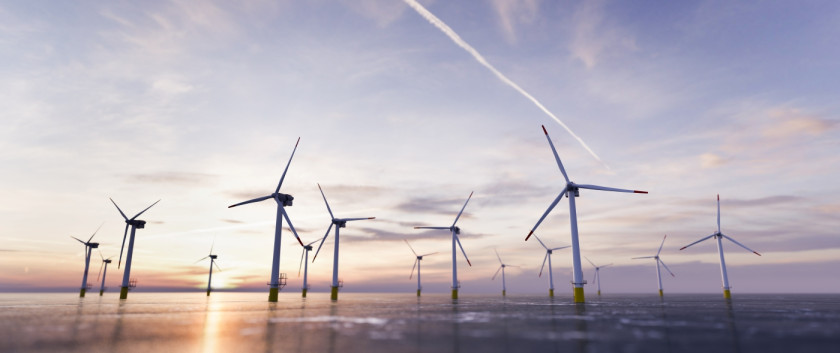
Recently, our CEO Hugo Groenemans, was one of the co-authors of the paper: ‘Techno-economic analysis of offshore wind PEM water electrolysis for H2 production’. A model for producing hydrogen with offshore wind was developed and two scenarios are evaluated: Centralised hydrogen production onshore and integrated hydrogen production in an offshore wind turbine. This model calculated the cost of hydrogen produced by offshore wind and showed that the levelized cost of energy for hydrogen production and transportation to shore could be lower than for electricity transmission from offshore wind farms, using real wind data from a particular location. The paper concluded that: ‘therefore, direct coupling of the electrolysis system with an offshore wind turbine is more advantageous than transmitting electricity to shore and then producing hydrogen via traditional electrolysis; the cost of hydrogen from offshore wind electrolysis is estimated to be $2.09/kg versus $3.86/kg from traditional electrolysis using wind power.’ That is a reduction of 46%.
An important conclusion, which once again confirms our models and calculations on the benefits of integrating an electrolysis system with offshore wind turbines.
This study was conducted by:
The use of hydrogen as an energy carrier for stationary and automotive applications is increasingly being realized. Traditionally, hydrogen use has been limited in the electricity and transportation sectors due to high end-use capital costs of fuel cells, as well as high operating costs due to the price of hydrogen. Polymer Electrolyte Membrane (PEM) fuel cell technology have already matured greatly resulting in reduced cost, higher efficiency and improved reliability. Moreover, according to Toyota Japan they expect to cut the costs of their fuel cell systems in half by 2030 and still make a solid profit on their fuel cell systems.1 In addition, a drastic reduction in renewable energy costs has the potential of lowering the cost of hydrogen. Currently, generating hydrogen by electrolysis from energy supplied by the grid is simply too expensive. Hydrogen production uses ~50 kWh/kg of hydrogen. Purchasing energy off the grid at $0.06/kWh leads to an energy cost alone of $3/kg. Alternatively, by coupling electrolysis directly to renewables, one can avoid a number of costs incurred by both the renewable source and the electrolysis system, while increasing efficiency by eliminating several energy-conversion steps.
The United States has abundant offshore wind resources 2, 3, 4, with high speeds, particularly along the East Coast, West Coast, Great Lakes, and lower Gulf of Mexico regions. In March 2021, the Biden administration set a goal of developing 30 000 MW of offshore wind capacity in a decade — enough to power 10 million homes with clean energy. This tremendous investment also provides a great opportunity for coupling offshore wind with PEM water electrolysis, which may possess numerous synergies that have yet to be fully explored, quantified, and modelled.
In a conventional scenario, an offshore wind turbine generates variable-frequency AC power at the turbine stator level. It is not feasible to put this electricity to the grid because neither voltage nor frequency is firmly regulated. Therefore, wind turbines are equipped with power-quality equipment that transforms the variable-frequency AC power to DC power at ~1200 V and then transforms it back to a clean 60-Hz AC power that can be fed into the grid and transformed up to 66 kV. The AC power from the individual wind turbines is aggregated at an offshore station, where the power is further transformed higher than 110 kV, where it is transmitted to shore, as long as the distance to shore is less than 100 km. For larger distances, it is preferable to transform power to DC with a voltage ~600 kV at the substation for transmission to shore. The reason for the two different transmission systems has its origin in the lowest cost to transmit the power to shore and the increase of high harmonic resistance over long distances with AC power transmission. At shore, the power needs conversion to the electrical requirements for the electrolysis system, typically 100–200 VDC, depending on the stack size, to generate hydrogen at moderate, 40 bar, pressure.
This conventional scenario is compared to an offshore wind–water electrolysis system for which wind turbines do not have an electrical connection to shore or even an interarray connection between the turbines in the wind farm. Once the hydrogen is produced at a pressure of 40 bar, a compressor increases the pressure to 150 bar into a pipeline. In the offshore wind–water electrolysis system, all the turbines are connected to the hydrogen pipeline, which transports the hydrogen to shore. Compared to the conventional scenario, the offshore wind–water electrolysis system omits the electrical infrastructure to transport the electricity to shore, and within the wind turbines, a lot of electrical conversion steps are not required anymore. This results in higher efficiencies, lower capital expenditure, and an expected increased reliability.
Authors:
